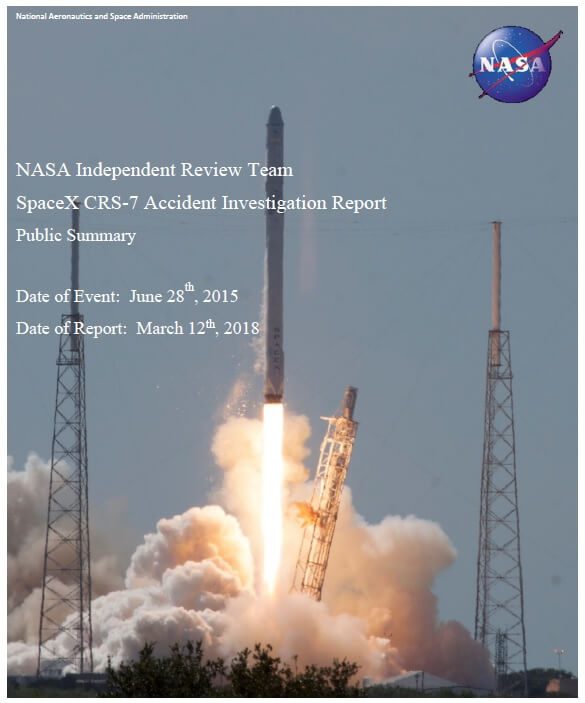NASA’s independent report into the Falcon 9 launch failure, which lost Dragon CRS-7 and eight small Flock/Dove satellites on 28 June 2015, has finally been released. It specifically criticises a SpaceX design error – and by implication its chief designer: Elon Musk. The report has been published as NASA prepares the ground ahead of its safety analysis of Boeing and SpaceX commercial crew systems, which will fly in 2020.
The vehicle exploded 2 minutes 19 seconds after launch, just before first stage shutdown, at an altitude of 45km. An overpressure event was detected in a second-stage oxygen tank less than a second before the explosion. An investigation into the cause of the Falcon 9 (v1.1) launch failure in June came to the conclusion that a strut holding down a helium-filled composite overwrapped pressure vessel (COPV) inside an oxygen tank snapped (probably near the bolt attachment point). The COPV tank either struck the LOx tank dome causing it to rupture, or there was a helium leak, which allowed helium to over-pressurise and blow up the second-stage oxygen tank. The buoyancy of the helium tank actually increases with rocket acceleration.
The subsequent independent investigation by NASA agreed with the above scenarios, but disagreed that the most likely cause was a material defect in the part supplied by the subcontractor. NASA’s investigators argued that it was poor design in the selection of the rod/strut material (an industrial rather than an aerospace grade stainless steel was chosen without adequate analysis given to the loads and cryogenic environment) that was a more likely cause of failure. The launch, spacecraft and the spacecraft’s contents were not insured.

NASA’s independent report into the Falcon 9 failure of 28 June 2015. Courtesy: NASA








